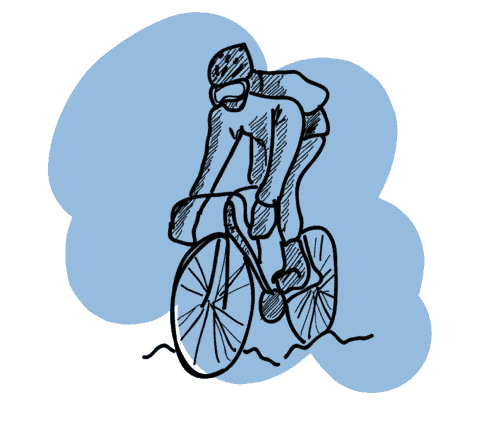As part of the University of Saskatchewan’s Sustainability Week, the Bridge City Bicycle Co-op in Saskatoon hosted a workshop on winter biking on Oct. 14. As an option that is cost-effective, good for your body and the environment, winter biking is something that students should consider for commuting.
When I moved into a new place this summer, I said good-bye to having a vehicle. Over the summer months it’s been great — I have been biking, walking and using public transit more. But with the latest dump of snow and winter approaching, I find myself wondering whether I should consider biking through the winter or storing my bike until spring.
Although it seems intimidating at first, winter biking is actually more affordable and less terrifying than it sounds. Kev Fontaine and Meaghan Hackinen of the BCBC led the workshop on campus, and both of them are experienced winter bikers. According to Fontaine, if you have a bike, you can winter bike — to put it simply.
For starters, when it comes to outfitting your bike for the winter, there are multiple options. Some riders choose to have a second bike for the winter months, while others make a few changes to their summer ride instead.
If you continue riding your summer bike, the main thing you need are winter tires. If you can only afford one, it’s better to put the winter tire on the front of your bike. Winter tires can cost around $75 to $200, but they can also be handmade, which will cost between $20 and $40. The BCBC also hosts an annual “build your own bike tires” workshop, and uses screws poking through the outside of tires for spikes.
Road bikes or bikes that have a back break aren’t the best to continue riding through the winter, because they’re more likely to skid. If you have an expensive summer bike, be warned that winter biking will wear down your bike faster. If you choose to go with getting a new bike, try looking on Kijiji first. Don’t shell out hundreds of dollars on a fancy winter bike before you know if you even like it.
When it comes to clothing, Fontaine suggests that you don’t need cycling-specific gear. It’s best to have the basics that cover your hands, feet, upper body, head and thighs, which is where the wind will hit. Also essential is a pair of ski goggles, otherwise your eyes will become dry and squinty, and Hackinen suggests buying these at a thrift store for cheap. Another tip she shared was that you can pull a hood over your head and then put your helmet on, which will help to block the wind.
What you wear while biking is dependent on your body temperature and how fast you bike. It’s best to figure out what works for you through a process of trial and error, but one rule of thumb is that if you’re too hot in your house before you leave, you’re going to be too hot on the road.
When biking, avoid busy streets with lots of ruts, and bike where you feel most comfortable, even if that’s on the sidewalk or side streets. Pedestrian bridges and the Meewasin Valley Trail are all cleared during winter, which makes for an easier commute. Fontaine also recommends allowing for one-and-a-half to two times the usual amount of time it takes you to bike somewhere because when you’re first starting, it’s best to bike slower to get a feel for the road conditions.
Fontaine thinks it’s better to start by riding one day a week on your bike, and then adding more. Don’t go all out in the beginning or you will likely give up. Hackinen also shared some motivation on why she enjoys winter biking.
“Winter biking is kind of an experience and an experiment,” she said. “Last year I saw the Northern Lights at 6 a.m. a few times … and I thought, ‘I wonder if I would see this if I wasn’t on my bike at this time?’”
For more information and to get involved in the winter biking community in Saskatoon, follow the Bridge City Bicycle Co-op on social media.
—
Naomi Zurevinski / Editor-in-Chief
Graphic: Lesia Karalash / Graphics Editor